Tokyo and Surroundings
Skyscrapers and Temples
Use the navigation bar on the left or the map-links to select a place. Alternatively scroll down to see all the entries. Click on photos to enlarge. See more Tokyo photos here.
Tokyo
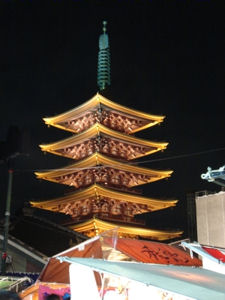
My first trip to Tokyo was during the New Year holiday week. This is mostly a family festival and in the evenings everyone heads to the temples to pay their respects. I went to a few of the most famous temples and was staggered by the crowds. While everyone briefly visits the temples, around the outside large numbers of food stalls are set up and it is very much a carnival atmosphere. What also surprised me was that on New Years day the whole of Tokyo central was deserted and all the shops were closed. I wandered the streets of this 24 hour city and saw almost no one until lunch time.
Due in part to the busyness of the season and in part to me just turning up with no reservations I discovered that all of the guest houses in Tokyo were full. This did, however, allow me to experience the wholly Japanese experience of the capsule hotel. These are also the cheapest places to stay in Tokyo, for the reason that you only pay of a 1x1x2 meter box. The capsule itself is not so exciting; however, there is usually a communal room and a decent Japanese bathroom - several large communal baths full of very hot water. In fact I now always stay in one of the capsule hotels in Asakusa, it is cheap, centrally located and has a great bath. The following day I wandered around some nice parks and saw the Emperors palace, which is quite impressive.
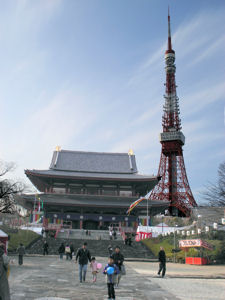
While I was here a large riot squad arrived and started setting up hundreds of road cones to form what looked like the largest queuing system in the world, I think for the following days festivities. The Japanese cannot officially have an army and this coupled with fourth largest world military spending budget leads to a highly trained police squad with almost nothing to do. On further visits to Tokyo I have wandered much of the main areas and seen some of the suburbs, although it is hard to tell where such a thing begins as the greater Tokyo area is the largest world conurbation I think (certainly it is the only obvious man made entity visible from space, or Google maps for those of us who have not been to space).
Yokohama
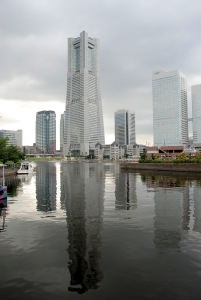 Yokohama is the second largest city in Japan; however it is directly connected with Tokyo as the whole of the Kanto region is one immense urban conurbation. Having deep water the area has helped it become one of the major Asian ports and since it was one of the first places opened to foreigners it has a cosmopolitan feel. This is especially true of the much-hyped China Town area which is one of the regions major attractions. Upon my first visit in 2007 I could not tell if the proprietors of the restaurants and the area were Chinese who were totally fluent in Japanese or native Japanese. However, as part of my final trip around Japan in 2008 I met up with Tachizaki san here, and he pointed out the Chinese names on the houses around area - Japanese names are always two sets of two characters, the Chinese names are three characters and are of a different kanji style. It being during the Japanese summer holidays when all the factories close the area was packed so we headed to a stylish Japanese area of Yokohama and went to a very good soba restaurant - Tachizaki san is something of a food expert, even by Japanese standards.
Yokohama is the second largest city in Japan; however it is directly connected with Tokyo as the whole of the Kanto region is one immense urban conurbation. Having deep water the area has helped it become one of the major Asian ports and since it was one of the first places opened to foreigners it has a cosmopolitan feel. This is especially true of the much-hyped China Town area which is one of the regions major attractions. Upon my first visit in 2007 I could not tell if the proprietors of the restaurants and the area were Chinese who were totally fluent in Japanese or native Japanese. However, as part of my final trip around Japan in 2008 I met up with Tachizaki san here, and he pointed out the Chinese names on the houses around area - Japanese names are always two sets of two characters, the Chinese names are three characters and are of a different kanji style. It being during the Japanese summer holidays when all the factories close the area was packed so we headed to a stylish Japanese area of Yokohama and went to a very good soba restaurant - Tachizaki san is something of a food expert, even by Japanese standards.
Following this we visited the dock area and found a mini festival which comprised of a tent selling several hundred different flavours of ice cream from all over Japan and a Brazilian style parade featuring several scantily clad Japanese girls - something of a surprise to me as Japanese girls are usually quite conservative when it comes to exposed skin on the top half of the body.
The next port of call was the Landmark Tower, one of Japans tallest building and until recently home to the fastest lifts in the world. While somewhat hazy the view from the top was still great, offering views over the bay and towards central Tokyo. Finally we met up with Yoshi and his wife and selected an Izakaya in which to enjoy the remainder of the afternoon and evening.
Kamakura
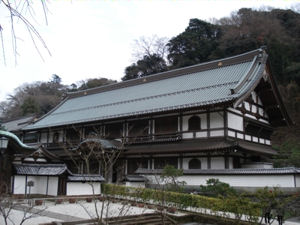 Kamakura was briefly the Japanese capitol many years ago and has an abundance of impressive old Buddhist temples. I also came here over New Year so there were many food stall and the temples close to town were packed, however, slightly further out the area was peaceful and the silence only broken by the chanting of the monks. There is a nice walk connecting many of the temples and shrines of the area, which I enjoyed and some of the temples were quite interesting, the most impressive being one set into a shallow gorge which is accessed via a cave.
Kamakura was briefly the Japanese capitol many years ago and has an abundance of impressive old Buddhist temples. I also came here over New Year so there were many food stall and the temples close to town were packed, however, slightly further out the area was peaceful and the silence only broken by the chanting of the monks. There is a nice walk connecting many of the temples and shrines of the area, which I enjoyed and some of the temples were quite interesting, the most impressive being one set into a shallow gorge which is accessed via a cave.
Nikko
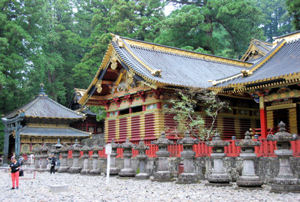
Nikko is a more impressive version of Kamakura, boasting some really impressive temple complexes. The amount of gold used in the Nikko region is quite spectacular, with every temple brightly painted. I like the elaborate nature of the carvings and while the area was full of tourists like myself; there was still a feeling of mystique in some of the further regions. I think a good day would be best to explore the area fully; however, I only had a few hours since I was on my way to a conference outside Tokyo. A rush around, though, was still enough though to be thoroughly impressed by the grandeur of the site.
Mt Fuji
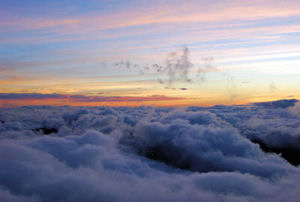
I climbed Fuji san with Yoshi at the end of September. This is officially just outside the trekking season; however, it would be hard to guess since we were far from alone. Starting at 3am we missed the crowds who start around 11pm to see the dawn from the summit and this allowed us some sleep and then to see the sunrise from around the 75% station (we started at 2000m out of the total 3776m). I was surprised that the path basically went straight up the 40 degree slope, making it quite hard work, especially early in the morning with freezing rain - bizarrely while being soaked we could see a full sky of stars. As the sun rose the clouds were burned off and we had a nice walk up to the top and given spectacular views out over the Fuji area and Tokyo proper. Coming back down was the most interesting decent I've ever encounter being just a very steep dirt track what you have to half run and jump, half ski down.
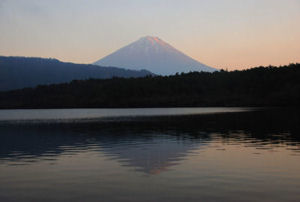
Tiring on the knees, but at least it meant we were back before lunch and could relax in some of the areas famous hot springs for the afternoon. I also returned to the base of Mt. Fuji after travelling around Kansai. This was in November so there is snow on the top and the views from the lakes around the northern slopes were quite stunning - picture taken from Sai Ko.
Nagano
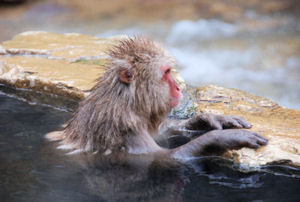
Nagano is situated to the west of Tokyo in the Japanese Alps. I travelled here for a weekend to go and see the Snow Monkeys near the town of Yudanaka. This place is famous because many years ago the monkeys took a liking to the natural hot springs that are so abundant in the area. Now they are often to be found soaking themselves in the hot water, especially in winter when there is snow on the ground.
The area has become something of a tourist spot and so the pools have been built of stone especially for the monkeys and, while it is forbidden to feed the monkeys, grain is occasionally scattered on the ground and in the water to keep them interested. The previous winter had been very mild, along with a good summer, and probably for that reason there were many baby monkeys as well as close to 50 adults.
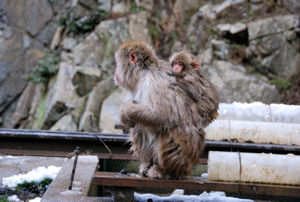
As well as the monkeys the area is famous for its ski resorts and hosting the Winter Olympics back in 1998. Going to hot springs is one of the Japan's favourite pass times, and so it is not just the monkeys who can soak up the cleansing water, although I found the temperature rather hot here (about 60deg I think).
Nagano itself is quite a nice city with one large temple (Zenkoji). The most interesting part of this temple is the underground passage underneath it. This is the darkest place I've ever been I think - it is absolutely pitch black and you must walk along several corridors with 90 degree turns in them (along with a crowd of other people) to find the exit. The idea is to recreate the search for enlightenment, and the experience is quite strange.